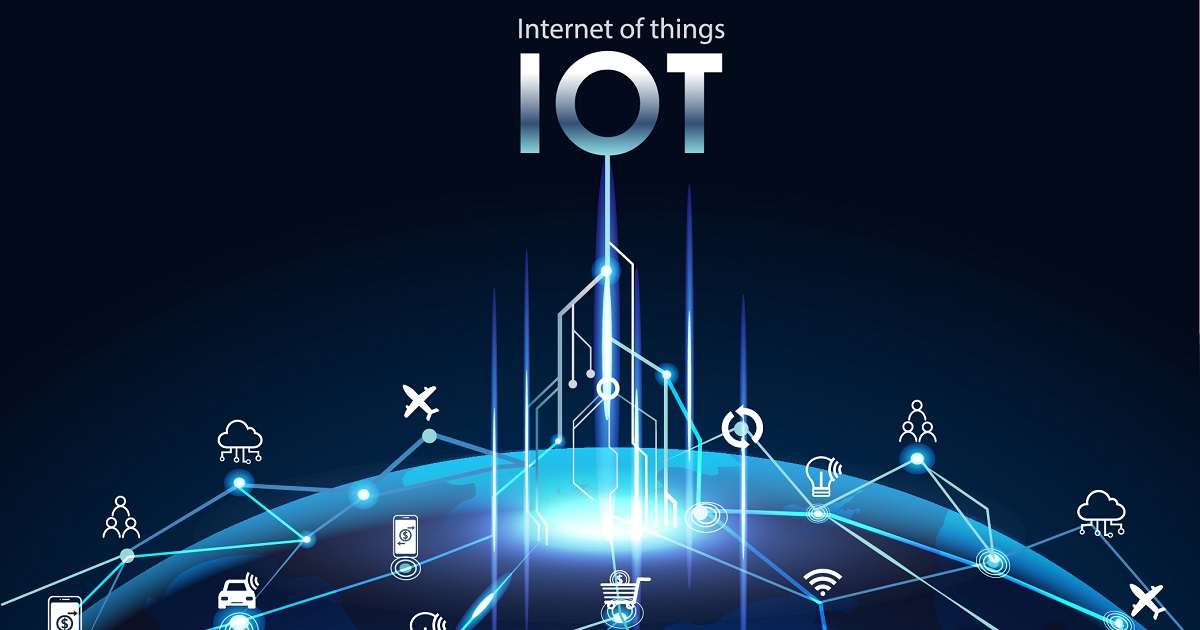
IoT Security
Article | July 17, 2023
For businesses, the transformative power of IoT is increasingly significant with the promise of improving operational efficiency and visibility, while reducing costs.
However, IoT does not come without risks and challenges. While concerns over security and data privacy continue to rise, the lack of IoT standards remains one of the biggest hurdles. The increasing number of legacy, single-vendor, and proprietary solutions cause problems with disparate systems, data silos and security gaps. As IoT successes become more dependent on seamless interoperability and data-sharing among different systems, we want to avoid the scenario of a fragmented market with numerous solutions that simply don’t work with each other.
Read More

Enterprise Iot
Article | May 11, 2023
Discover the crucial role of big data capabilities in unlocking the potential of IoT for businesses. This article covers their synergy, challenges, and value in decision-making and revenue generation.
Contents
1 Why Big Data and IoT Matter for Businesses
2 Understanding Synergy of Big Data and IoT
2.1 How IoT generates Big Data
2.2 Challenges of Processing Big Data from IoT Devices
2.3 Importance of Big Data in IoT Applications
3 The Value of Big Data and IoT for Businesses
3.1 Improved Decision-making for Businesses
3.2 Generate New Revenue Streams
4 Final Thoughts
1. Why Big Data and IoT Matter for Businesses
The internet of things (IoT) is connecting all types of physical assets to the internet, from smart wearables that track wearer’s vitals to connected industrial units that can report any malfunctions automatically. Big data in IoT is a natural outcome with the growth of IoT devices, with an immense surge in the amount of data being generated.
There are currently over 13 billion connected IoT devices worldwide.
(Source – Techjury)
This data is extremely valuable to businesses as it can help streamline operations, predict trends, and diagnose device issues. Certain functions of IoT devices that are crucial for modern businesses, such as enabling predictive maintenance, depend on the analysis of the data generated every second. However, to maximize the ROI from their IoT ecosystem, businesses must first manage and process the vast amounts of unstructured data they produce. This is where big data capabilities come in.
2. Understanding Synergy of Big Data and IoT
Big data and the IoT are fundamentally different concepts, but are closely connected. Big data is a term that is used for a great amount of data that is characterized by volume, velocity, variety and veracity (or the ‘trustworthiness’ of data). The IoT is a term for physical devices or objects linked to the internet using an assortment of technologies. Understanding the synergy between these two technologies will be critical for businesses looking to leverage their full potential.
2.1 How IoT generates Big Data
IoT is one of the primary drivers of big data growth. The vast number of interconnected devices in the IoT ecosystem generates a massive amount of data every second. This data includes information on user behavior, device performance, and environmental conditions, among others.
The nature of this data makes it challenging to store, process, and analyze using traditional data management tools. This is where big data technologies such as Hadoop, Spark, and NoSQL databases come in, providing the ability to manage massive amounts of data in near-real-time, enabling critical applications of big data in IoT. For businesses, processing IoT data is synonymous with processing big data, due to the nature of the data generated by an IoT ecosystem.
2.2 Challenges of Processing Big Data from IoT Devices
IoT data processing is a complex and challenging task due to several reasons. Firstly, the sheer volume of data generated by these devices is enormous and is only increasing. This requires a robust infrastructure and specialized tools to store, manage, and analyze the data efficiently.
This data is also generally unstructured, heterogeneous, and complex, making it difficult to process using traditional data management and analysis techniques. Moreover, it is often noisy and may contain errors or outliers, which can impact the accuracy of data analysis. Businesses also face a challenge when securing such vast amounts of data. Since IoT devices collect sensitive information such as personal and financial data at scale, it is critical to ensure that data is encrypted, transmitted securely, and stored safely.
Additionally, IoT devices often operate in remote locations with limited connectivity, making it challenging to transmit data to the cloud for storage and analysis. As IoT devices continue to proliferate and generate increasingly large amounts of data, businesses must adopt big data technologies to gain actionable insights from this data.
2.3 Importance of Big Data in IoT Applications
There are several use cases of the IoT where processing large amounts of data is essential. It plays a critical role in IoT applications, providing businesses with valuable insights that can be used to optimize processes, reduce costs, and improve overall efficiency. By collecting and analyzing large amounts of data from IoT devices, businesses can gain a better understanding of customer behavior, machine performance, and other critical metrics.
For example, big data in IoT can be used to identify patterns in customer behavior, allowing businesses to tailor their marketing efforts and improve customer engagement. Additionally, IoT devices can be used to collect data on machine performance, allowing businesses to identify potential problems before they occur, minimize downtime, and optimize maintenance schedules. The value of big data in IoT applications lies in its ability to provide businesses with real-time insights that can be used to drive growth, reduce costs, and improve overall efficiency.
3. The Value of Big Data and IoT for Businesses
Businesses looking to integrate big data in IoT must first consider their data storage and analytics capabilities. By understanding the value of big data technology in capturing and analyzing IoT-generated data, businesses can unlock insights that can help them make better decisions, optimize processes, and create new business opportunities.
3.1 Improved Decision-making for Businesses
IoT and big data technologies offer businesses a wealth of data that can be used to make better-informed decisions. By integrating IoT sensors and devices with their operations, businesses can collect real-time data on customer behavior, operational performance, and market trends. This data can then be analyzed using big data analytics tools to generate valuable insights that can inform decision-making.
For example, operational data can be analyzed to identify inefficiencies and areas for optimization, helping businesses reduce costs and improve efficiency. With the right data storage and analytics capabilities, businesses can leverage the power of IoT and big data to gain a competitive advantage and make better-informed decisions that drive growth and success.
3.2 Generate New Revenue Streams
By leveraging the vast amount of data generated by IoT devices and analyzing it with big data analytics tools, businesses can gain insights into customer behavior, market trends, and operational performance. These insights can be used to create new revenue streams and business models, such as subscription-based services, pay-per-use models, and predictive maintenance services.
For example, IoT sensors can be used to collect data on equipment performance, allowing businesses to offer predictive maintenance services that help prevent equipment breakdowns and reduce downtime. Similarly, customer data can be analyzed to identify new revenue opportunities, such as personalized product recommendations and targeted advertising. With the right strategy and investment in IoT and big data technologies, businesses can unlock new revenue streams and create innovative business models that drive growth and success.
4. Final Thoughts
Big data in IoT is becoming increasingly important for businesses, and the future prospects are bright. As IoT continues to grow and generate more data, businesses that can effectively analyze it will gain a competitive advantage, leading to increased efficiency, reduced costs, and higher ROI. To fully realize the benefits of IoT, businesses must develop big data analytics and IoT devices in tandem, creating a feedback loop that drives continuous improvement and growth. By embracing these technologies, businesses can make data-driven decisions and unlock new insights that will help them thrive in the years ahead.
Read More

Industrial IoT, IoT Security
Article | July 12, 2023
Building resilient IoT networks: Exploring the top technologies for enhancing IoT security and protecting as well as safeguarding against evolving cyber threats in the interconnected era of Industry 4.0.
Contents
1. What is Network Resilience and Why is it Needed?
1.1 Continuous Operation
1.2 Mitigating Security Threats
1.3 Data Protection
1.4 System Availability
1.5 Risk Management
1.6 Regulatory Compliance
2. Factors to Consider for Network Resilience
3. Top Trends in IoT Security
3.1 Zero Trust and AI
3.2 Supply Chain Security
3.3 Network Segmentation and Segregation
3.4 Over-the-Air (OTA) Updates
3.5 Device Authentication and Authorization
3.6 Software-defined Networking (SDN) Security
3.7 Identity and Access Management (IAM)
4. Conclusion
1. What is Network Resilience and Why is it Needed?
Network resilience refers to the ability of an IoT network to withstand and recover from disruptions, attacks, or failures while maintaining its essential functions. It involves implementing measures to ensure the network remains available, reliable, and secure, even during security threats or unexpected events.
Ensuring network resilience is a critical aspect of IoT network security. Network resilience refers to the ability of an IoT network to withstand and recover from disruptions, attacks, or failures while maintaining its essential functions. Ensuring network resilience in IoT network security is crucial for the following reasons:
1.1 Continuous Operation
IoT networks often support critical applications and services that require uninterrupted operation. Network resilience ensures that these applications can continue functioning even during disruptions, such as network failures or security incidents. It minimizes downtime and ensures business continuity.
1.2 Mitigating Security Threats
IoT networks are susceptible to various cybersecurity threats, including malware, unauthorized access, or Distributed Denial of Service (DDoS) attacks. Network resilience measures help mitigate these threats by implementing security controls, monitoring network traffic, and enabling prompt detection and response to security incidents.
1.3 Data Protection
IoT devices generate and transmit vast amounts of sensitive data. Network resilience safeguards data integrity, confidentiality, and availability by implementing secure communication protocols, encryption mechanisms, and access controls. It ensures that data remains protected even during network disruptions or security breaches.
1.4 System Availability
IoT systems often rely on real-time data processing and communication. Network resilience ensures that data flows seamlessly, allowing IoT devices to exchange information and execute tasks without interruptions. It supports critical functions such as monitoring, control, and decision-making processes.
1.5 Risk Management
Building network resilience helps organizations effectively manage risks associated with IoT deployments. By identifying vulnerabilities, implementing protective measures, and having response plans in place, organizations can minimize the impact of security incidents, reduce financial losses, and maintain the trust of stakeholders.
1.6 Regulatory Compliance
Many industries have specific regulations and standards governing the security and resilience of IoT networks. By ensuring network resilience, organizations can demonstrate compliance with these requirements, avoiding penalties, legal issues, and reputational damage.
2. Factors to Consider for Network Resilience
Implementing redundancy and failover mechanisms within the network infrastructure helps mitigate the impact of single points of failure. This involves deploying backup systems, redundant network paths, and failover mechanisms to ensure continuous operation despite a failure or attack. Traffic Monitoring and Anomaly Detection for Continuous network traffic monitoring helps identify abnormal patterns or behaviours that may indicate security threats or attacks. By leveraging intrusion detection and prevention systems (IDPS) and traffic analysis tools, organizations can promptly detect and respond to network anomalies, safeguarding network resilience. Moreover, segmentation and Isolation: Dividing the IoT network into segments or zones and isolating critical devices or systems from less secure ones enhances network resilience. Implementing proper network segmentation, VLANs (Virtual Local Area Networks), or software-defined networking (SDN) enables effective control, containment, and mitigation of security incidents.
DDoS attacks significantly threaten network resilience by overwhelming the network's resources and causing service disruption. Deploying robust DDoS protection measures, such as traffic filtering, rate limiting, and traffic diversion, helps mitigate the impact of such attacks and ensures network availability. Incident Response and Establishing comprehensive incident response and recovery plans specific to IoT network security incidents is crucial. These plans should outline clear procedures, roles, and responsibilities to efficiently respond to and recover from security breaches or disruptions, minimizing downtime and maintaining network resilience. In addition, regular penetration testing, vulnerability assessments, and network audits help identify weaknesses and vulnerabilities in the IoT network infrastructure. Promptly addressing these issues through patches, updates, and security configuration adjustments strengthens network resilience by proactively addressing potential security risks.
By implementing these measures, organizations can enhance the resilience of their IoT networks, ensuring continuous operation, prompt threat detection, and effective response to security incidents. Network resilience plays a vital role in maintaining IoT systems' integrity, availability, and reliability in the face of evolving security challenges.
3. Top Trends in IoT Security
3.1 Zero Trust and AI
Zero Trust is an emerging security concept that assumes no implicit trust towards devices or users, even if they are already inside the network perimeter. Implementing Zero Trust principles in IoT networks can help mitigate the risks associated with compromised devices and unauthorized access for IoT security. In order to bolster cybersecurity measures, adopting a zero trust approach. Effectively addressing cybersecurity challenges entails not merely technological solutions but a comprehensive organizational strategy rooted in cultural and policy frameworks. Emphasizing the zero trust concept underscores the importance of policy implementation throughout the entire organization, complementing technological measures.
3.2 Supply Chain Security
The complex and interconnected nature of IoT supply chains introduces security risks. The supply chain for IoT devices involves multiple stages, including device manufacturing, software development, distribution, and deployment. Each stage presents potential security risks that can compromise the integrity and security of the IoT network. This includes adopting secure supply chain management practices, such as verifying the security practices of suppliers and manufacturers, and establishing clear security requirements and standards for the entire supply chain. Conducting third-party risk assessments helps evaluate the security posture of suppliers and vendors to identify any potential vulnerabilities or weaknesses.
3.3 Network Segmentation and Segregation
In IoT security, minimizing the potential impact of a compromised IoT device is crucial, and network segmentation and segregation play a vital role in achieving this goal. Network segmentation involves dividing the network into separate zones or segments, based on factors such as device type, functionality, or security requirements. The containment strategy helps minimize the impact of a security breach by isolating compromised devices and preventing lateral movement within the network.
3.4 Over-the-Air (OTA) Updates
Software updates play a critical role in maintaining the integrity and security of IoT devices. IoT devices frequently require updates to address software bugs, patch vulnerabilities, or introduce new features. Over-the-Air (OTA) update mechanisms are being enhanced with robust security measures to ensure the secure delivery and installation of updates. Code signing is a prevalent practice where updates are digitally signed with cryptographic keys to verify the authenticity and integrity of the software. Secure boot is another important mechanism that establishes a chain of trust during the device boot-up process, ensuring that only authorized and tamper-free software is loaded onto the device.
3.5 Device Authentication and Authorization
The increasing number of IoT devices poses a significant challenge in ensuring secure and trusted authentication and authorization. Two-factor authentication (2FA), for example, adds an extra layer of protection by requiring users or devices to provide two separate forms of authentication, such as a password and a unique code sent to a mobile device. Digital certificates, on the other hand, enable secure and trusted device authentication by leveraging public key infrastructure (PKI) technology. Each IoT device is issued a unique digital certificate, which serves as a digital identity, allowing for secure communication and verification of device authenticity.
3.6 Software-defined Networking (SDN) Security
Securing Software-defined Networking (SDN) environments is paramount to protect IoT deployments. SDN offers centralized control and management of network resources, providing flexibility and scalability. This ensures that only authorized entities can access and make changes to the SDN infrastructure, preventing unauthorized access and configuration changes. Additionally, continuous traffic monitoring and analysis enable the detection of suspicious activities and potential security breaches. Encryption IoT standards and protocols should be employed to secure communication between the SDN controller, switches, and IoT devices, safeguarding data privacy and integrity. Network segmentation within the SDN environment helps limit the impact of security breaches, reducing the attack surface.
3.7 Identity and Access Management (IAM)
Implementing IAM solutions, such as role-based access control (RBAC) and multi-factor authentication (MFA), within IoT networks significantly enhances network security. IAM ensures that only authorized individuals can access and interact with IoT devices and systems. RBAC enables administrators to assign specific access privileges based on user roles and responsibilities, reducing the risk of unauthorized access. Additionally, incorporating MFA adds an extra layer of security by requiring users to provide multiple forms of authentication, such as a password and a unique token or biometric verification. This significantly reduces the risk of unauthorized access even if a user's credentials are compromised.
4. Conclusion
The technologies discussed in this article play a crucial role in enhancing IoT network security and resilience. By leveraging these technologies, organizations can mitigate the risks associated with IoT deployments, protect against cyber threats, and ensure the reliability and continuity of their IoT networks. As the IoT landscape evolves, staying up-to-date with these top technologies will be essential for organizations to maintain a robust and secure IoT infrastructure.
The transformative landscape of Industry 4.0 demands strong network security in IoT environments. The top technologies discussed in this article empower organizations to enhance network resilience, protect against cyber threats, and ensure the uninterrupted functioning of IoT networks. Embracing these technologies and staying ahead of emerging threats, helps organizations build a secure foundation for their IoT deployments and capitalize on the vast opportunities offered by the IoT ecosystem.
Read More

Enterprise Iot
Article | July 15, 2022
Physical and digital security are changing due to cloud-based IoT software, which makes it possible to combine them and use them to utilize data better. In almost every sector, data is essential to success, and security is no exception. To better understand what's going on in your business, you can combine cloud-based solutions that contain all the information on a single interface. For instance, integrating security camera feeds with cloud-based access control systems enables real-time visual identification verification.
Utilizing cloud-based IoT technology also enhances productivity and enables quick replies. Combining digital and physical security, often known as security convergence, is another technique to optimize IoT and cloud-based security solutions. To guard against internet flaws and intrusions, a cloud-based physical security system needs cybersecurity software. In a similar vein, physical security measures prevent sensitive data from getting into the wrong hands. Teams for physical and cyber security might combine to provide a more comprehensive plan of action.
Maintaining current versions of the technology you are using in your security plan is necessary for future-proofing your technology. To ensure that your cloud-based system has no vulnerabilities that could expose your company to cybersecurity risks, it is crucial to keep all software updated. Updates can be automated and carried out remotely with cloud-based software, requiring little effort on your part to keep your software current.
You have the chance to develop a security system that is future-proof when a firm adopts cloud-based IoT technologies as part of your security plan. When organizations use IoT technology, cybersecurity is a significant concern. However, combining physical and digital security lets you ensure your cloud-based system is well-protected from vulnerabilities. In addition, your security and IT teams will be better able to manage the evolving security landscape if you combine physical and digital security ideas.
Read More